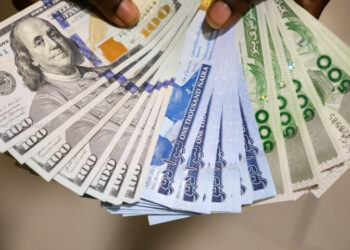In a tumultuous start to the New Year, the Nigerian naira experienced a sharp decline, tumbling by 8.97% against the dollar on January 2, 2024. This unsettling depreciation unfolded despite a substantial $2.25 billion injection from the African Export-Import Bank (Afreximbank) aimed at mitigating the country’s persistent forex challenges.
The currency concluded the trading day at N988.46/$1, marking a significant loss compared to its position on the last trading day of the previous year, when it closed at N907.11. Afreximbank’s disbursement was part of a larger $3.3 billion foreign exchange support facility intended to address the acute liquidity shortage in Nigeria’s FX market, following the unification of the FX market by the Central Bank of Nigeria (CBN) in June 2023.
Despite the injection, the naira’s decline was stark, with an intraday high reaching N1130/$1 and an intraday low of N744.50/$1, reflecting a wide spread of N385.50/$1. The forex turnover at the close of trading was $15.38 million, indicating an 82.78% decrease compared to the previous day.
The parallel forex market mirrored the trend, with the naira depreciating to N1,220/$, a 0.41% decline from the last trading day of December 2023. Peer-to-peer trading also saw a decline, with a rate of N1,209.75/$, representing a 0.89% decrease from the previous month.
Afreximbank’s Intervention Faces Trader Skepticism
Afreximbank’s release of $2.25 billion from the $3.3 billion FX support facility, signed on December 29, 2023, aimed to relieve the acute liquidity shortage in Nigeria’s FX market. However, the market’s response indicates skepticism among traders as they maintain their positions.
The financial arrangement, orchestrated with the involvement of various entities, including the United Bank for Africa (UBA), Guvnor, and Sahara Energy, was expected to alleviate Nigeria’s current FX supply challenges. UBA, in its role as the Onshore Depository Bank, holds a pivotal position in the arrangement.
NNPC Limited played a significant role as the principal financier, facilitating the financing of the transaction, with major oil trading firms such as Sahara Energy, Vitol, Oando, and Gunvor acting as sub-lenders. Despite their involvement, the naira’s decline persisted, signaling the complexity of the challenges facing Nigeria’s currency stability.
The first tranche of the transaction, totaling $2.25 billion, was expected to ease forex liquidity pressures. However, the market’s response underscores the need for a comprehensive and sustained strategy to address Nigeria’s intricate economic landscape and currency woes. As stakeholders evaluate the unfolding situation, the resilience of the naira remains a focal point in navigating the evolving dynamics of the country’s financial ecosystem.










